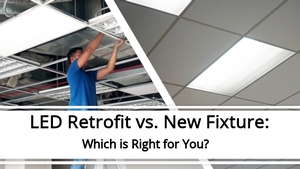LED bulbs are all the rage... have you upgraded yet? If not, here are three things you should consider!
I was a hard sell on LEDs when they first started gaining traction several years back... heck, I own LightBulbs.com and I was still stuck on the old classic incandescent bulbs (insert "Plumber's pipes are always leaky" joke here). Aside from the cost factor, it was the quality of light that was keeping me from upgrading; I guess you could say I'm a bit of a light snob. However, as costs came down and any remaining quality control issues were resolved, I switched all of the bulbs in my home to LEDs and have never looked back.

Here are the 3 main reasons that *I* upgraded to LED Lights in my home:
Energy Savings
Most people are aware of how much LED lighting can save energy, but let's go over this anyways. Classic incandescent bulbs, while maintaining that soft, warm, nostalgic look, are flat out energy hogs. They require much more electricity (read: wattage) than LEDs do. The beauty of LEDs is that as technology keeps progressing, the suggested wattage replacements for "Incandescent to LED" is getting lower and lower! I was able to replace all of the 60-75 watt bulbs in my home with 9-10 watt LEDs with an average 80% reduction in wattage consumption per socket.
Money Savings
For anyone that owns a home, it is common knowledge that the energy consumption directly correlates to the electric bill! I had done some preliminary energy savings calculations first, so I could start planning on an ROI (Return on Investment) for my LED upgrade, and after replacing roughly 70 sockets in my home, I welcomed a nice $30-40 monthly savings on my utility bill! This part is not smoke and mirrors: if you save watts, you save money. Add in the fact that LEDs last a LONG time, and you will soon realize a complete payback on your investment!
Time Savings
A typical 60-75 watt incandescent usually lasts for 1,500 hours. This isn't super long for those that burn bulbs on a regular basis. This usually means that you are replacing THAT bulb 1-2 times per year (based on 4-8 hours burned per day). Add in the fact that filament styled bulbs tend to burn out quicker (vibration in a home = incandescent death), and you are replacing bulbs on a regular basis. In my house, my kids running and jumping always caused my incandescent bulbs to die out early. You are going to see most quality LEDs last from 15,000 to upwards of 50,000 hours, which will result in a massive decrease in personal labor to replace burned out bulbs.

What's next with LED Lighting? LED technology is continuing to advance and some of the more exciting features coming out include integration with Smart Home Systems and providing programmable on/off settings, customized themes, unlimited color options and more!
--
Note: when researching LEDs to replace the bulbs in your home, pay attention to fixtures that are enclosed (flush mount ceiling ones, for example). You'll want to find LED bulbs that are rated for enclosed fixtures. While using bulbs that are *not* rated for this environment would technically work, it is not advised as the heat could cause performance issues and a potential hazardous environment.






